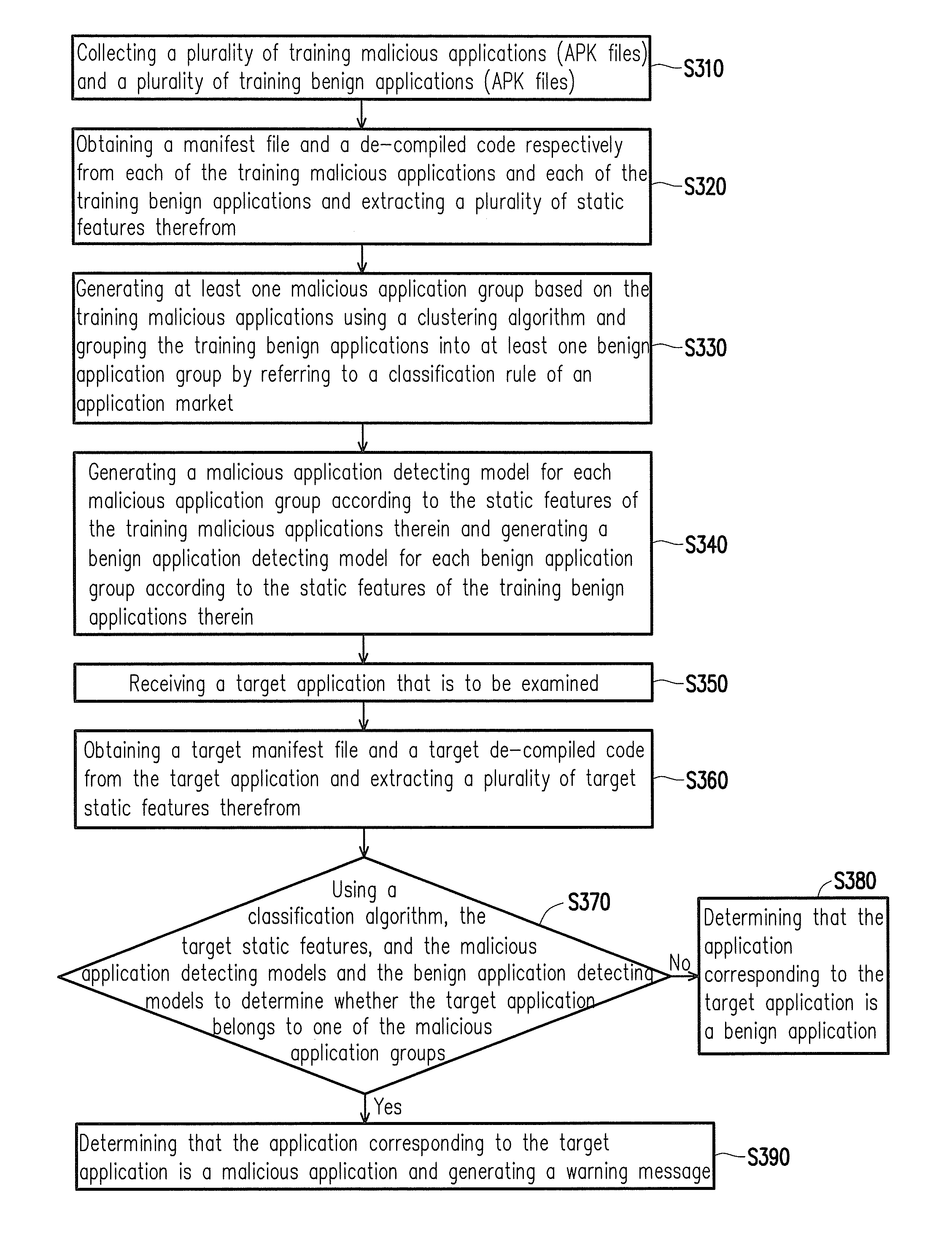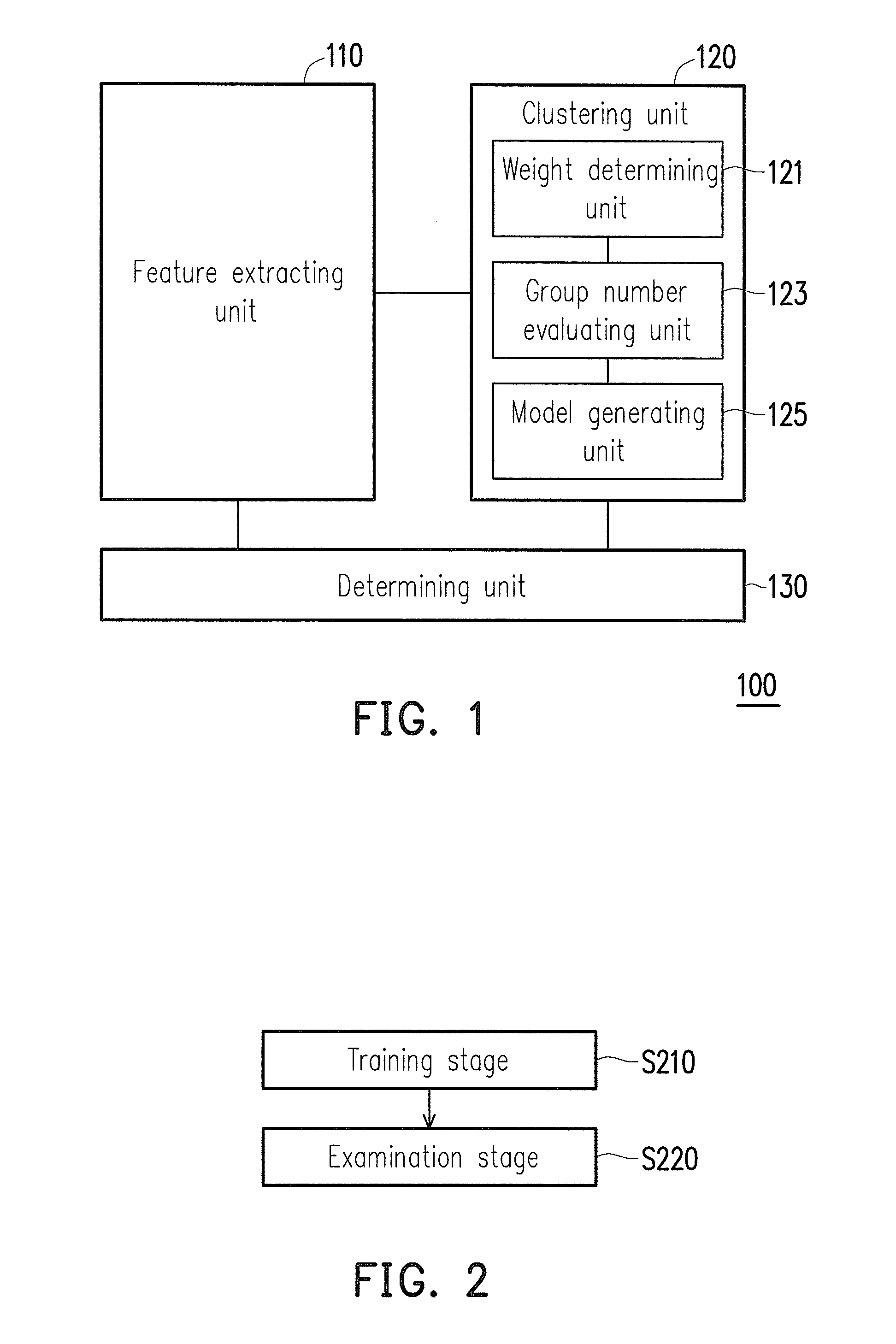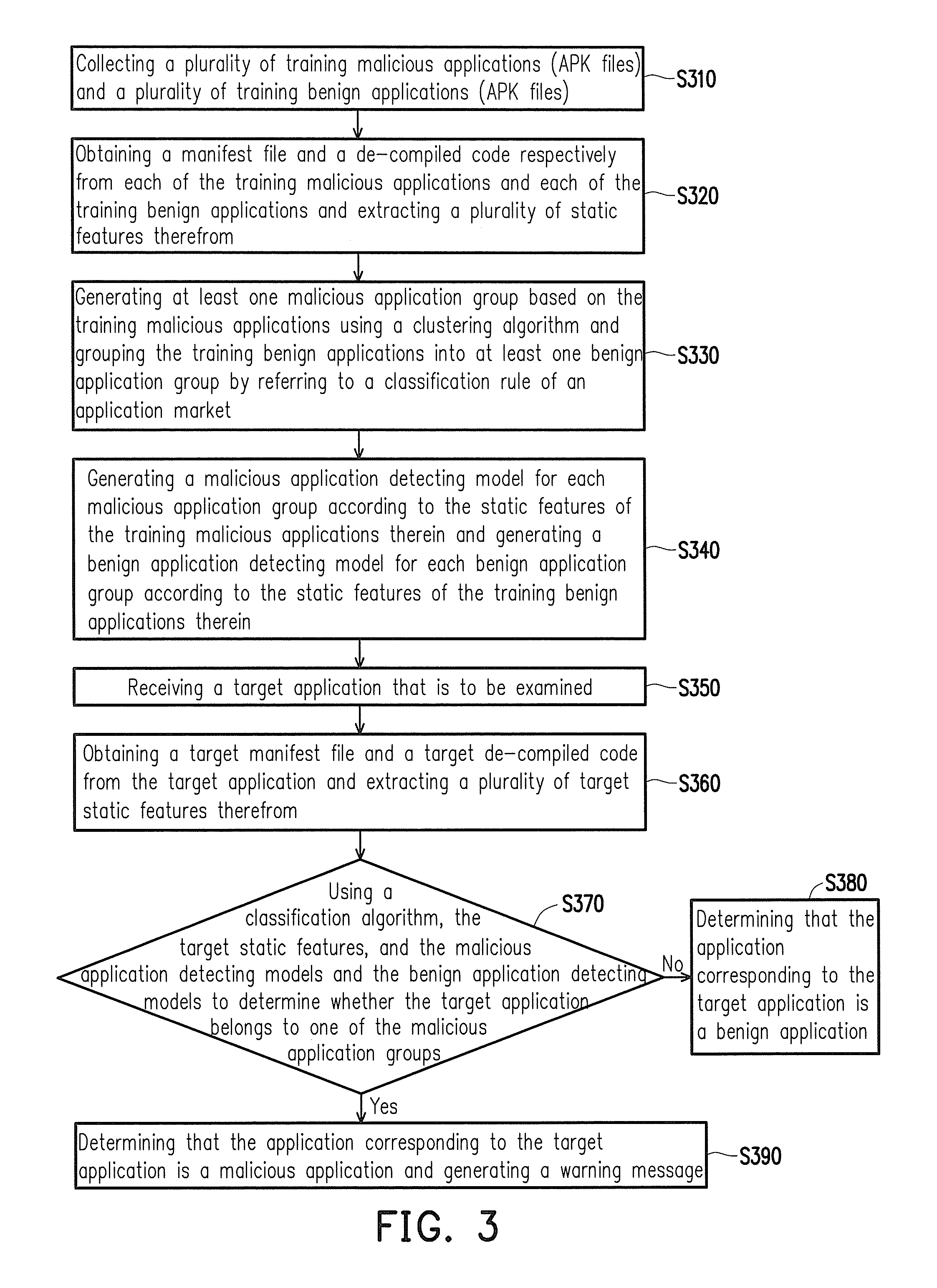Method and system for detecting malicious application
a malicious application and detection method technology, applied in the field of methods for detecting malicious applications, can solve the problems of inability to inability to successfully detect malicious applications, and inability to easily detect new variant malicious applications, etc., to achieve the effect of quick and effective examination
- Summary
- Abstract
- Description
- Claims
- Application Information
AI Technical Summary
Benefits of technology
Problems solved by technology
Method used
Image
Examples
Embodiment Construction
[0017]FIG. 1 is a block diagram showing a malicious application detecting system according to an embodiment of the invention. Referring to FIG. 1, a malicious application detecting system 100 includes a feature extracting unit 110, a clustering unit 120, and a determining unit 130. The clustering unit 120 includes a weight determining unit 121, a group number evaluating unit 123, and a model generating unit 125. Specifically, the feature extracting unit 110 is coupled to the clustering unit 120. The determining unit 130 is respectively coupled to the feature extracting unit 110 and the clustering unit 120.
[0018]The malicious application detecting system 100 determines whether an application contains any virus or malicious code mainly through static analysis. In particular, the malicious application detecting system 100 effectively detects the security of applications adapted for mobile electronic devices, so as to protect the mobile electronic devices. More specifically, the mobile ...
PUM
 Login to View More
Login to View More Abstract
Description
Claims
Application Information
 Login to View More
Login to View More - R&D
- Intellectual Property
- Life Sciences
- Materials
- Tech Scout
- Unparalleled Data Quality
- Higher Quality Content
- 60% Fewer Hallucinations
Browse by: Latest US Patents, China's latest patents, Technical Efficacy Thesaurus, Application Domain, Technology Topic, Popular Technical Reports.
© 2025 PatSnap. All rights reserved.Legal|Privacy policy|Modern Slavery Act Transparency Statement|Sitemap|About US| Contact US: help@patsnap.com



